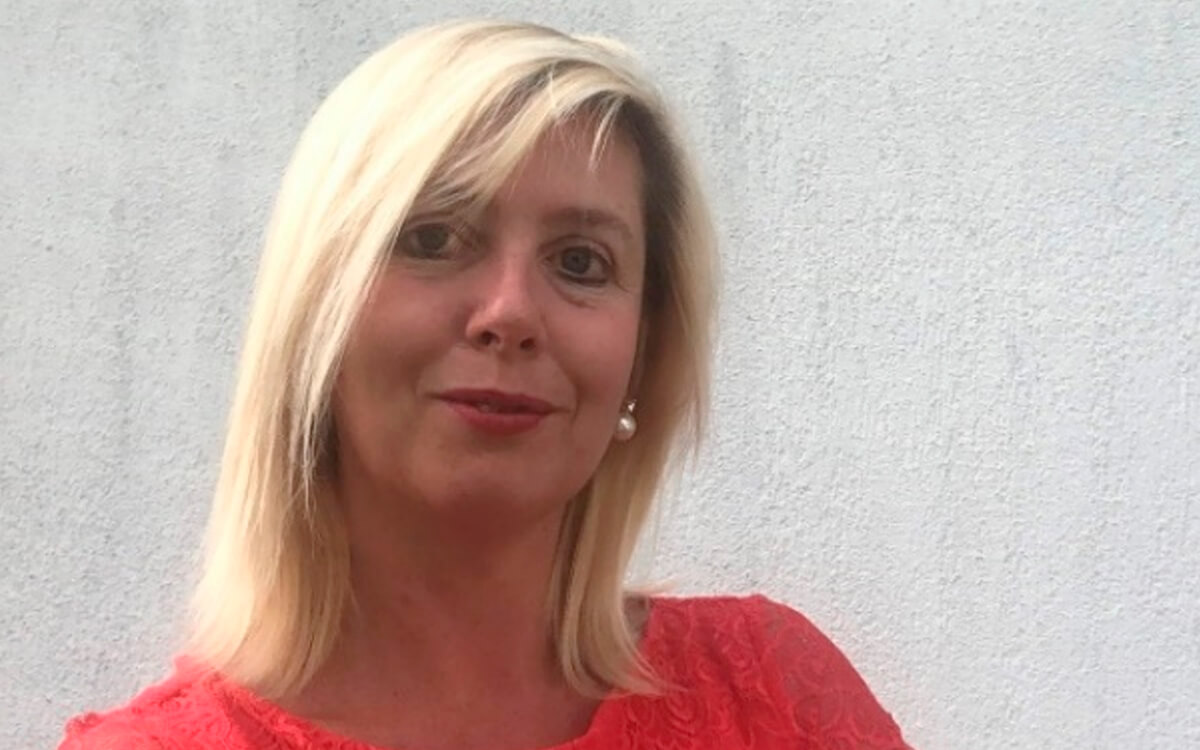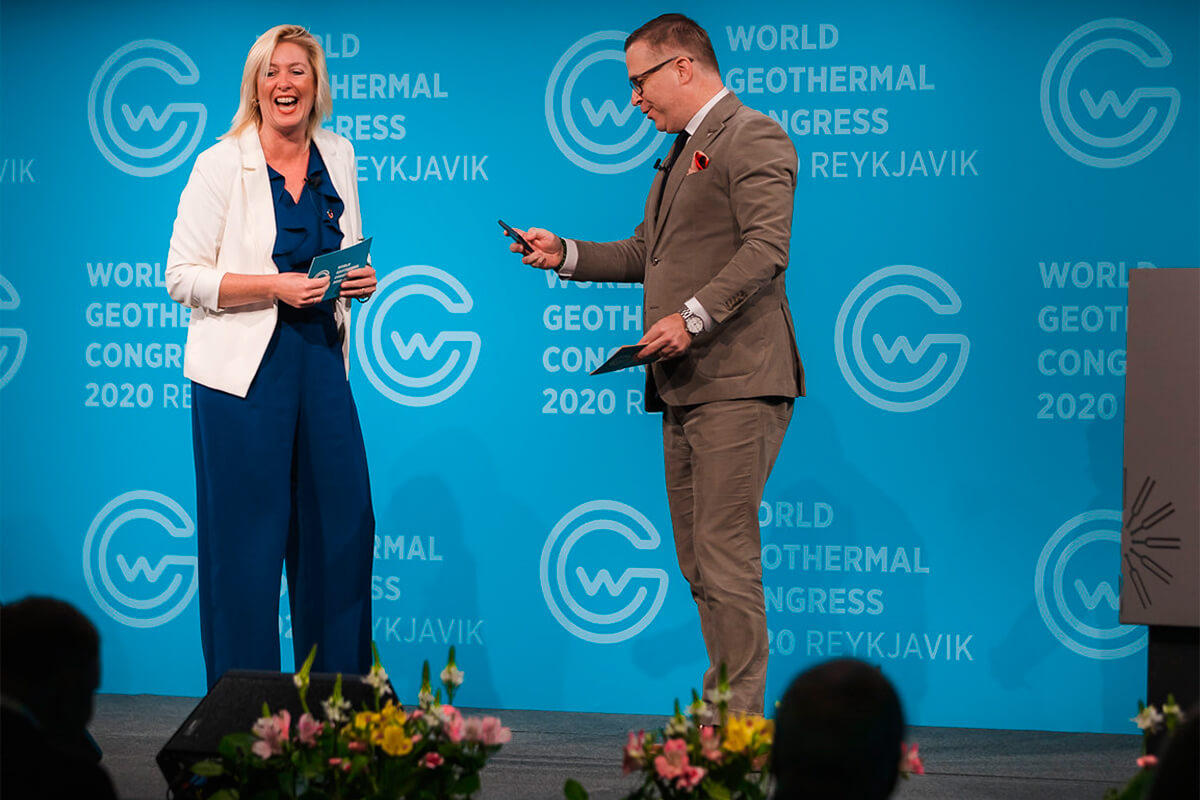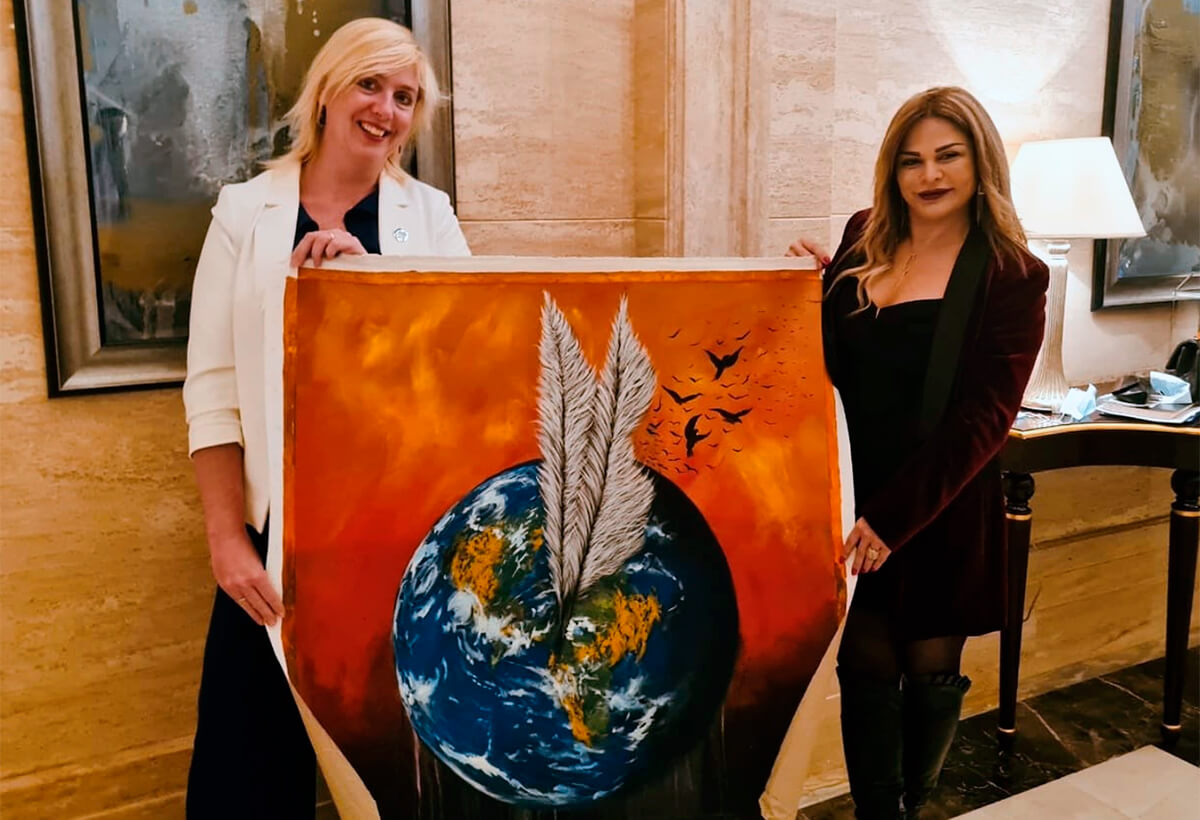
Dr. Marit Brommer is the Executive Director of the International Geothermal Association. She is focused on creating strong partnerships with international operating organisations and industries. Prior to taking on this role, Marit worked at Shell for 15 years as a subsurface portfolio manager. She has been actively spearheading the use of geothermal energy, by explaining its advantages, such as its always being available (not dependent on weather), cultivating momentum, in view of the urgency to decarbonize heating systems, and supporting the march towards a net-zero goal by 2050, set by most countries. She also advocates for the implementation of enabling policies which need to be incentivised by decision-makers.
Marit’s dynamism and tireless efforts at enhancing the visibility of geothermal energy in the energy mix, are praise-worthy. She is constantly delivering convincing talks, interspersed with facts and figures, at different forums, participating in engaging discourses, and reaching out to concerned individuals for better governmental policies and financial incentives.
I contacted Marit with a request for an interview, to discuss her views on a range of issues, which she gladly accepted. Her interesting and insightful comments are contained in the following excerpts.
Marit, let us begin by asking you about your educational qualifications and your work experience.
I studied geology at the Free University in Amsterdam and did my PhD in applied geology and geophysics at the Technical University in Delft. I always wanted to be a pilot and took flying lessons in my teenage years. The beauty of the different landscapes I watched from high up was just so inspiring to me that I decided to go into geology to gain a better understanding of planet Earth. So, I studied geology at the Free University in Amsterdam. It was fun all the way, especially the field trips! In the years approaching my graduation, I had taken some courses on geophysics which piqued my interest and realized that geology and geophysics could be my destiny. I ended up completing my PhD in applied geology and geophysics at the Technical University in Delft. I was then hired to work on reservoirs, resources and well designs at TOTAL, where I worked for about 5 years. I was invited to join a female leadership course at Shell´s campus and was offered a job at their R&D facilities later on. I accepted, and worked at Shell for about 7 years, on various kinds of technology and geoscience projects. I enjoyed my time there.
You worked in the oil and gas industry for 15 years before taking on your present position. Could you please tell us about the different types of assignments you picked up, resulting in the rich experience that you gained?
At Shell, I worked on projects that spanned the acquisition and processing of seismic data. There were also those entailing the interpretation of seismic and other available data, with the goal of generating prospects for drilling. These projects gave me an all-round exposure to oil and gas exploration and development.
Towards the latter part of my working years at Shell, I became interested in the global energy transition, and the world’s perspective on moving away from fossil fuels and embracing renewables. Within this perspective on energy transition, I was particularly intrigued by the marginal role played by geothermal energy. Although many countries worldwide are adopting geothermal energy as a potential renewable energy resource, and influential people like Bill Gates specifically refer to geothermal power as a phenomenal amount of energy stored as heat under the earth’s surface, and earmark it as an investment opportunity, we have a long way to go to create that visibility for geothermal on the world energy scene.
Marit, you are the Executive Director of the International Geothermal Association (IGA). Tell us about IGA first, then your role as its leader.
The IGA, headquartered in The Hague, The Netherlands, is a global platform. We are an industry association operating and supporting about 60 countries worldwide. Our members come from industry, R&D, and governments, and have one thing in common: increasing geothermal projects globally, and by so doing, serving the United Nations’ Sustainable Development Goal Number 7: affordable and clean energy for all.
IGA’s mandate is to encourage and facilitate the development of geothermal resources. This includes innovative research into geothermal technologies and promoting scientific and technical education in geothermal matters worldwide, in terms of the best practices and unbiased benefits of developing Earth’s geothermal energy for direct use, heat, and power generation. Being an unlimited and renewable natural energy resource that can provide clean energy for power, heating, cooling and other direct uses, geothermal energy can also generate revenue through by-products such as health and beauty units, as well as tourist attractions. More recently, there has been an increased interest in lithium production from geothermal brines. IGA works with its partners such as the World Bank, the International Renewable Energy Agency (IRENA), Global Geothermal Alliance, the Green Climate Fund, the European Commission, and others, to set standards, scrutinize mature technology agendas, and nurture entrepreneurs engaged in clean technology.
As the Executive Director of IGA, my role is that of a facilitator, to ensure smooth running of the different units within our association, and to direct concerted efforts towards the goals that define our vision.
Clearly, the nature of your work has changed. How have your qualifications and experience helped you with discharging the responsibilities that come with the position you now occupy?
I think it is all about continuous learning and development. The skills I acquired during my formal training, during my MSc and PhD, have been very beneficial for all the work that I have carried out and have been responsible for. Besides that, over the duration of one’s career, one acquires the so-called soft skills, which have more to do with communication, behaviour, ability to adapt, and leadership. I think all those qualities come or are honed while on the job.
You were in the news at the beginning of 2021, when you joined the Steering Committee of the International Renewable Energy Agency (IRENA). Please enlighten us about what IRENA is, how many members it has, its mandate, and how IGA helps it.
IRENA is a coalition that brings together over 120 leading renewable energy players, including private sector companies, industry associations, civil society, research institutes, and intergovernmental organisations. It is more like a non-state actor and can convene global political leadership to advance the dialogue on the needs and benefits of renewable energy. It also carries out analyses for market development and provides annual summaries of RE (renewable energy) stocktake.

IGA is a strong partner to the Global Geothermal Alliance formed under the IRENA leadership. It is an honour to be part of the steering committee of IRENA and oversee the various initiatives taking shape, and, wherever necessary, spearhead efforts to ensure progress and development. I was very happy to be re-elected into the steering committee for a second term!
Please tell us about the potential of geothermal energy, and why it is an important component of the world’s future clean energy mix?
Geothermal is a renewable source of energy, is always on, and is low carbon.
There are different ways in which geothermal energy can be used. We hear of natural hot springs, where groundwater is emerging through porous and fractured rocks, after making contact with the deeper and hotter layers of the earth’s crust. Geysers spout columns of hot water and steam through vents in the earth’s surface. Under suitable conditions, the geothermal system can be used to our advantage. For instance, a fluid circulation cycle could be set up by injecting (pumping) cold water through a well down to a hot sandstone reservoir rock, and then drawing it up as hot water through another well a certain distance away. Of course, such an initiative requires the right kind of rocks through which a steady water-flow rate can be established. Such geothermally heated water (usually >75°C) is being used for heating buildings constructed in their proximity, in which hot water from the producing well transfers the heat to the housing heating grid.
At locations where the subsurface water is available at higher temperatures, geothermal energy is being used for running turbines and generating electricity.
The feasibility of such geothermal reservoirs is dependent on finding reservoir rocks that will allow water to percolate. Reservoirs need good porosities and permeabilities, high enough temperatures, and appropriate structural components. New technologies, especially drilling and innovative well designs pertaining to closed-loop systems, can maximise geothermal potential and allow a “Geothermal Anywhere” principle, where the temperature of the rocks is more important than permeability, as the heat-harvesting principle is based on conductivity.
At present, where has the geothermal sector been the most successful? Has it been in the direct use of geothermal heat, power generation, or something else?
Looking at the global distribution of geothermal resources for power generation, the most significant contribution has been made in the USA, followed by Indonesia and the Philippines, in terms of the most installed capacity.
For low-enthalpy resource drilling situated in sedimentary basins, China, and the European Union (especially Turkey, Germany, The Netherlands, Croatia, the UK, and Belgium) have taken the lead.
As the demand for clean energy, both for power and heat, is increasing, geothermal projects are being initiated which will exhibit a growth scenario in the near term.
Talking about the global distribution of geothermal resources, and picking the thread from the previous question, which are the top ten countries that have adopted, developed, and expanded the use of geothermal energy?
As I stated in my answer to the previous question, in terms of the most installed capacity, the top three countries are the USA, Indonesia and the Philippines, with the next seven being Turkey, New Zealand, Mexico, Kenya, Italy, Iceland, and Japan.
Is the cost of geothermal energy, for the applications you have talked about, affordable? How does it compare with the coal/gas cycle power plants? What does the comparison to solar and wind technology applications look like?
As per an estimate presented in 2020, the geothermal energy/levelized costs of energy ranges from $59 to $101/MWh. Interestingly, the levelized cost of geothermal energy has decreased by approximately 5% over the last five years, which seems low, compared to a cost reduction for solar and wind by up to 30 - 50% over the same five-year period. Consequently, solar and wind seem to be competing directly with coal and gas combined cycle power plants. Geothermal energy is at par with coal ($65 to $159/MWh) but is still more expensive than the gas combined cycle ($44 to $73/MWh).
If the adoption of geothermal energy is done more rapidly, and proper incentives are given by the federal governments, its cost per MWh will become competitive.

What are the present challenges that you think are preventing the exploitation of geothermal reservoirs by different countries, and what remedial measures could be suggested? Also, how do you foresee the growth of geothermal energy over the next decade and beyond?
The challenges that are being faced in the adoption or exploitation of geothermal resources may be put under three categories, namely, constraints in tapping the geothermal resources, the risk of starting earthquakes, and cost. To elaborate on the first one, geothermal energy can be utilized at the location of the resource, but this may not be close to transmission line infrastructure for transport of the generated electricity. Thus, in addition to the drilling expenditure that is incurred for exploiting the resource, the added expense for infrastructure serves as a dampening agent.
In 2017, an incident was reported in South Korea where the development of an enhanced geothermal system triggered an earthquake of magnitude 5.5. The risk of induced seismicity can be mitigated by observing strict standards and an established regulatory regime.
The capital costs incurred for the development of geothermal systems is relatively high, being in the ballpark of $2,500 per kilowatt for larger facilities. In comparison, the equivalent cost for a natural gas fired plant is around $1,000 per kilowatt. As mentioned earlier, for the solar and wind energy resources, which have enjoyed financial incentives, the capital costs fall between $1,200 and $1,700 per kilowatt. But despite this difference in cost, at present, geothermal systems require less maintenance and operation, and thus, in the long run, can prove to be competitive.
How do you think geoscience applications can help with the characterization of subsurface geothermal reservoirs? Do you think there is enough awareness about this type of work, or is more dedicated effort warranted?
For any geothermal energy development project, a strong understanding of the subsurface is required. This will entail gathering and interpreting information on reservoir temperatures, lithology, faults, fractures, porosity, and permeability, for the estimation of potential flow rates from conventional geothermal production wells. This will help solve problems associated with the reservoir, drilling and completion. The expertise of hydrocarbon industry personnel can be valuable, as they have the necessary knowhow for the determination of the reservoir properties I just mentioned. Needless to mention, the implementation of new technologies as required to develop a potentially extensive geothermal resource on a case-by-case basis, could be carried out as needed.
I believe the awareness is there, but a sustained effort needs to be directed towards showcasing the benefits of geothermal energy, in terms of it being environmentally friendly and economical in the long-term. The latter aspect could improve, as geothermal energy becomes more competitive with solar and wind energy.
The last few years have witnessed a significant emphasis on climate change, that has prompted many countries to transition toward cleaner resources and set ambitious net-zero carbon targets, as enunciated at the recently concluded Glasgow Conference. Do you think this will have a significant impact on countries adopting the latest technologies for geothermal exploitation?
There is a very good indication, indeed, but more can and should be done to raise the geothermal profile, globally.
At the recently held UN Climate Change Conference of the Parties (COP26) in Glasgow, 197 countries came together and forged the historic Glasgow Climate Pact. Individual countries, through their governments, have set ambitious climate goals and have committed to reducing their CO2 emissions by a certain percentage (below their 1990 emission levels) by 2030, and reaching carbon neutrality by 2050. Apart from other technologies that may be put in place for achieving this goal, carbon capture and storage and geothermal energy utilization are considered viable techniques that can help reduce the quantity of CO2 emissions in the atmosphere. The Glasgow Climate Pact seems to be a very encouraging step towards controlling the rising temperatures. I believe more needs to be done to raise the profile of geothermal energy as clean energy utilization and gradually march ahead towards making our dear planet Earth a safer and a better place to live for the future generations.
At present, all geothermal exploitation is being done onshore, correct? Is it just the economics that are preventing its exploitation in offshore areas, or there is something else to it?
Geothermal is a local service and, so far, only onshore assets have been developed. I personally am a big believer that offshore geothermal, similar to offshore wind, can be a potential gamechanger for geothermal growth scenarios. But, indeed, the economics must work out, and that is something we are working on.
What would be your message for young geoscientists joining our industry?
The future is bright. Your skills, knowledge and passion for the earth sciences are crucial to lead us forward in the energy transition. We are embarking on the decade of action, and you are so needed to dig in, roll up your sleeves, and execute the projects. And have fun on the way!
What are some of your other interests, besides the work you do for a living?
I love playing tennis and have taken up horse riding, recently. I very much enjoy traveling (which I do quite a bit for work), and make sure to visit geothermal spas.
Well, I thank you Marit, for giving me the time and the opportunity to have this discussion.
Thank you, it was a real pleasure.











Share This Interview